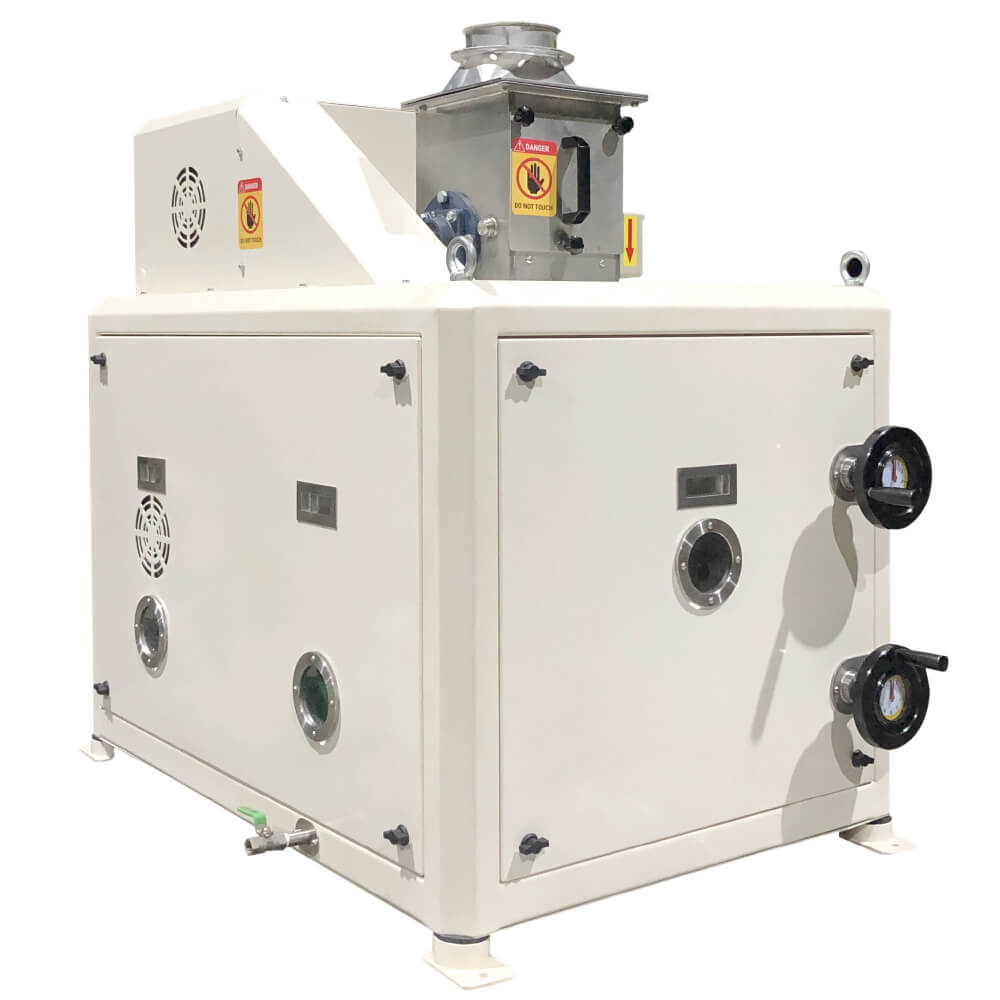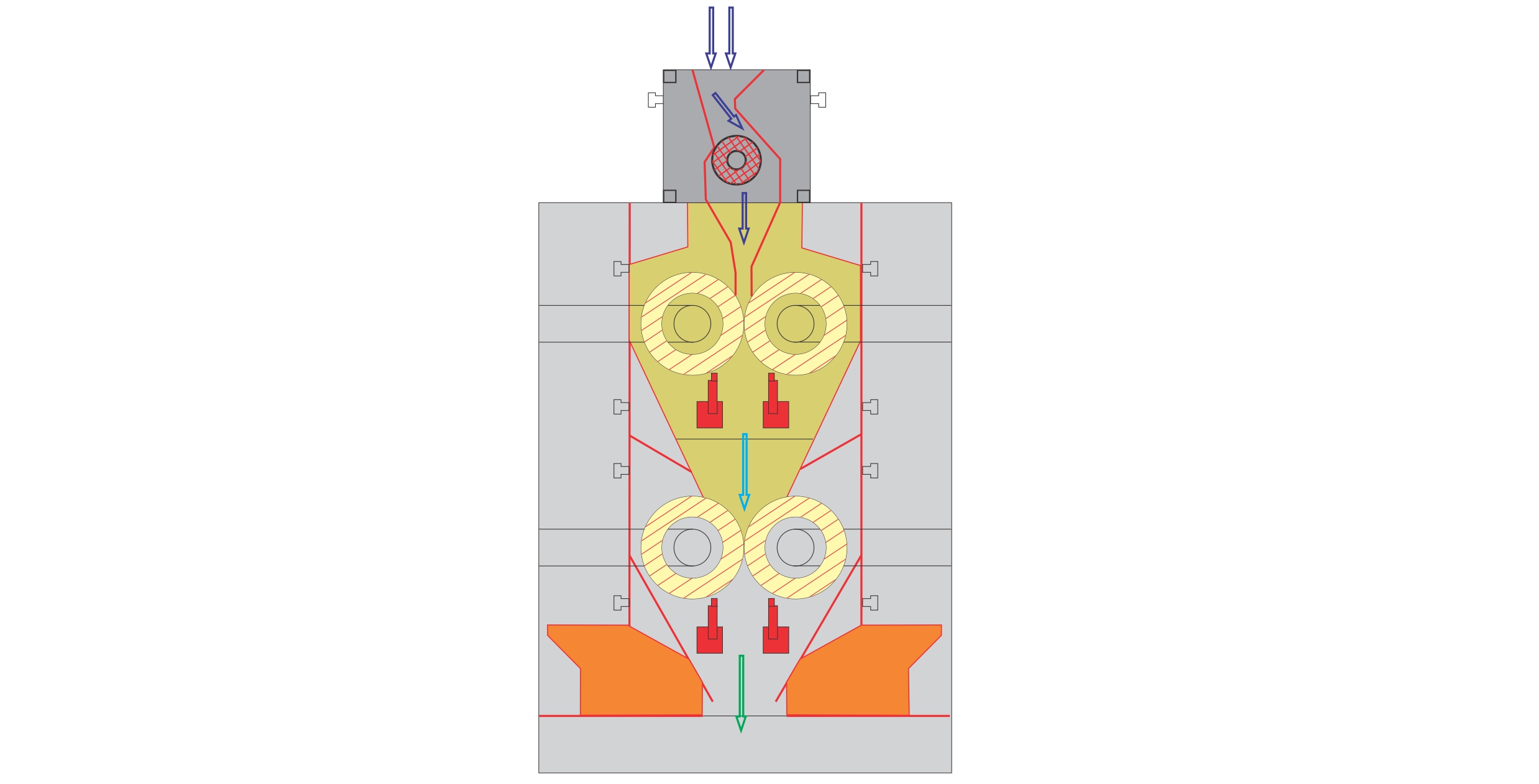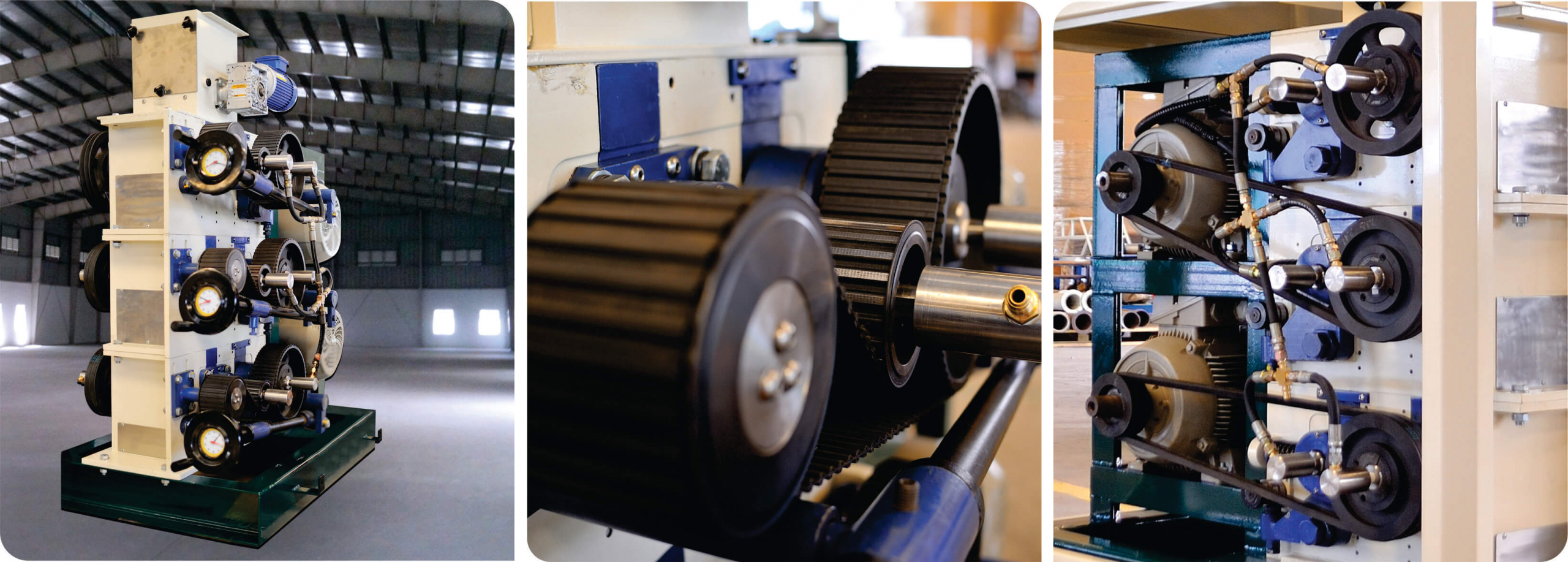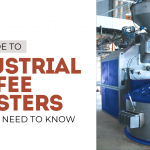The secret to exceptional coffee starts with how you grind your beans. The blade grinder vs burr choice is crucial for coffee lovers seeking the perfect brew. These two grinding methods offer distinctly different results – while blade grinders provide a basic solution, burr grinders are often praised for their precision. Understanding how each type affects your coffee’s flavor will help you choose the right grinder for your morning routine.
Explore the different types of industrial coffee grinders at: Types of Industrial Coffee Grinders.
Burr Grinders: Precision and Consistency
Burr grinders, which can be either conical or flat, operate by crushing the coffee beans between two burrs. One burr remains stationary while the other spins, grinding the coffee beans to a uniform size. This method of grinding offers significant advantages in terms of consistency and control over the grind size, which directly impacts the quality of the coffee brewed.

Burr Grinder
1. Types of Burr Grinders
- Conical Burr Grinders: These grinders use a cone-shaped burr that fits into a hollowed-out burr that resembles a cupcake wrapper. The design allows for a less noisy operation and less heat generation, preserving the coffee’s natural flavors. Conical burr coffee grinders are known for their durability and are generally quieter and cooler than their flat counterparts, making them a popular choice for home use
- Flat Burr Grinders: Consisting of two rings that lie flat against each other, flat burr grinders are often used in commercial settings due to their ability to produce an extremely consistent grind size. However, they can be noisier and generate more heat compared to conical burrs
2. Principle of Operation of the burr grinder

Burr Grinder’s Principle of Operation
- Conical Burr Grinders: These grinders feature two cone-shaped burrs that crush the coffee beans between them, gradually reducing them to a fine, consistent grind.
- Flat Burr Grinders: Instead of conical burrs, these grinders utilize two flat, circular burrs to grind the coffee beans with precision.
3. Grinding Process of the burr grinder

Inside of a burr grinder
- Bean loading: Whole coffee beans are carefully introduced into the hopper, ensuring a consistent and controlled flow into the grinding mechanism.
- Grind calibration: Burr grinders offer unparalleled control over the grind size, with options for stepped or stepless adjustments to cater to specific brewing methods or desired flavor profiles.
- Burr grinding action: The precision-engineered burrs exert immense pressure and shearing forces, crushing the beans into a remarkably uniform particle size distribution.
- Grounds collection: Freshly ground coffee is seamlessly discharged into dedicated catch bins or containers, facilitating efficient batch processing for high-volume operations.
4. Advantages of using a burr grinder
- Grind consistency: Burr grinders produce a more consistent grind, excelling at producing a uniform grind, ensuring even extraction and optimal flavor expression.
- Flavor extraction: The consistent grind size allows for better extraction of the coffee’s natural flavors and aromas, resulting in a superior brew.
- Adjustable grind settings: The ability to adjust the grind size makes burr grinders suitable for various brewing methods, from espresso to drip coffee.
- Durability: Burr grinders are built to withstand the rigors of commercial use, with robust constructions and high-quality components.
5. Disadvantages of using a burr grinder
- Higher cost: Burr grinders tend to be more expensive than their blade counterparts, owing to their sophisticated design and precision engineering.
- Maintenance requirements: Regular cleaning and maintenance are essential to ensure optimal performance and longevity of burr grinders.
Blade Grinders: Affordability and Versatility
Blade grinders, on the other hand, use a propeller-like blade to chop the coffee beans. They are generally more affordable and versatile, capable of grinding spices and other items in addition to coffee. However, they have significant drawbacks when it comes to grinding coffee.
1. Principle of Operation of the blade grinder
How does a blade grinder work:
- Spinning blades: At the heart of a blade grinder lies a set of sharp, rotating blades that slice and chop the coffee beans through a cutting and impact action.
- Cutting and impact forces: The blades spin at high speeds, generating powerful centrifugal forces that propel the beans towards the sharp edges, breaking them down into smaller pieces.
2. Grinding process of the blade grinder
- Bean loading: Whole coffee beans are introduced into the grinding chamber, a specialized compartment housing the blade mechanism.
- High-speed blade action: The grinding process is initiated by activating the blades, which spin at remarkably high speeds, slicing and chopping the beans through a combination of cutting and impact forces.
- Continuous grinding cycle: Unlike burr grinders, blade grinders operate in a continuous cycle, constantly chopping and re-chopping the coffee particles until the desired grind consistency is achieved.
- Grounds collection: After the desired grind level is reached, the freshly ground coffee is collected from the grinding chamber.
3. Advantages of using the blade grinder
- Affordability: Blade grinders are typically more cost-effective than burr grinders, making them an attractive option for those working with tighter budgets.
- Simplicity: Blade grinders feature a straightforward design and operation, making them easy to use and maintain.
- Compact design: Many blade grinders have a compact footprint, making them suitable for smaller workspaces or home brewing setups.
4. Disadvantages of using the blade grinder
- Inconsistent grind: Blade grinders struggle to achieve the same level of grind consistency as burr grinders, potentially leading to uneven extraction and inconsistent flavor profiles.
- Limited grind size control: While some blade grinders offer grind size adjustments, they generally lack the precision and versatility of burr grinders.
- Potential for overheating: The high-speed blade action can generate significant heat, potentially affecting the quality and flavor of the coffee beans.
Choosing Between Blade vs Burr Grinder: Key Factors
Blade Grinder vs Burr Grinder comparison table:
| Feature | Burr Grinder | Blade Grinder |
|---|---|---|
| Grinding Mechanism | Crushes beans between burrs (conical or flat) | Chops beans with fast-spinning blades |
| Consistency | High, uniform grind | Low, uneven grind |
| Flavor Quality | Superior flavor extraction due to consistency | Inconsistent flavors due to varied particle size |
| Adjustable Settings | Multiple grind size options | Limited or no grind size control |
| Heat Generation | Lower, preserving bean flavor | Higher, may impact flavor |
| Price | Higher cost | Generally more affordable |
| Best For | Professional, high-volume use | Budget-conscious, small-scale use |
Before investing in your coffee grinding equipment, consider these important factors:
- Budget:
- Burr grinders: Higher upfront cost but better long-term value
- Blade grinders: More affordable initial investment
- Coffee Volume Needs:
- Burr grinders: Ideal for high-volume operations
- Blade grinders: Better suited for small-scale needs
- Grind Quality:
- Burr grinders: Consistent size, better flavor extraction
- Blade grinders: Less precise, varying particle sizes
- Brewing Flexibility:
- Burr grinders: Works for all brewing methods (espresso to French press)
- Blade grinders: Limited grinding options
- Maintenance:
- Burr grinders: Regular cleaning and maintenance needed
- Blade grinders: Simple cleaning, minimal maintenance”
Applications of Burr and Blade Grinders in the Coffee Industry
Burr grinders are the preferred choice for specialty coffee shops, cafés, large-scale coffee roasters, and commercial bakeries or restaurants that prioritize quality and consistency. They are also commonly found in institutional and hospitality settings where high-volume and reliable performance are essential.
Blade grinders, on the other hand, may find their niche in smaller coffee shops, cafés, or home brewing setups where affordability and simplicity are prioritized over grind precision. They can also serve as backup or secondary grinders in larger operations.
Contact our experts to get a consultation on choosing the best Industrial Coffee Grinder that fits you business needs
Conclusion
In the battle between burr and blade industrial coffee grinders, there is no one-size-fits-all solution. Burr grinders offer unparalleled grind consistency, flavor extraction, and versatility, making them the ideal choice for discerning coffee professionals and large-scale operations. However, blade grinders provide a more accessible and affordable option for those with modest volume requirements or tighter budgets.
Ultimately, the decision should be guided by your specific needs, preferences, and the priorities of your coffee business. Whether you prioritize grind precision, flavor quality, or affordability, understanding the strengths and weaknesses of each grinder type will help you make an informed choice that aligns with your operational goals and customer expectations.
FAQ
Q: What’s the difference between burr and blade grinders?
A: Burr grinders use two abrasive surfaces to crush beans, offering consistency. Blade grinders use spinning blades, producing less uniform grounds.
Q: Which grinder is better for flavor?
A: Burr grinders typically provide better flavor due to uniformity in grind size.
Q: Are burr grinders adjustable?
A: Yes, burr grinders allow for precise grind size adjustments.
Q: Which type is more affordable?
A: Blade grinders are generally cheaper but offer less control over grind size.




